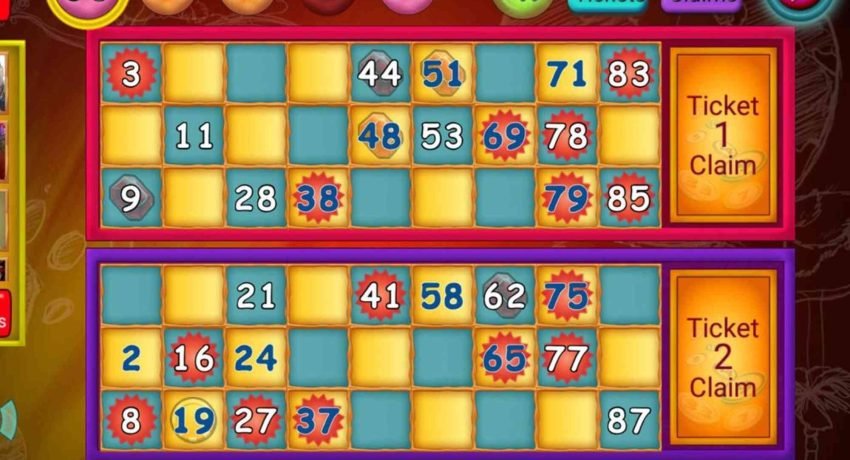Tambola, also known as Housie or Bingo in different parts of the world, is a thrilling game of chance that combines excitement, anticipation, and a dash of strategy. It’s one of the most engaging social games, played at family gatherings, office events, and community functions across generations. Whether you’re a seasoned player or a curious beginner, understanding Tambola, the classic number racing game, can make every round more exciting and rewarding.
In this guide, you’ll explore what makes Tambola so popular, how to play it correctly, and the winning strategies that can help you enjoy the experience to the fullest.
What Is Tambola?
Tambola is a number-based game where players mark numbers on their tickets as they are randomly called out by a host. The first person to mark a specific pattern or all numbers on their ticket wins a prize. It’s a mix of luck, alertness, and excitement — a perfect game to keep players on their toes.
Often referred to as the classic number racing game, Tambola traces its roots back to 16th-century Italy. Over time, it evolved into the Bingo we know today in Western countries, and into Tambola in regions like India, South Africa, and Southeast Asia. Despite minor rule variations, the joy of waiting for your number to be called remains the same everywhere.
How to Play Tambola
The gameplay of Tambola is simple yet endlessly fun. Every player receives one or more tickets printed with random numbers, typically ranging from 1 to 90. A caller, often using a random draw machine or digital app, calls out numbers one by one. Players must listen carefully and mark the numbers on their tickets.
The goal? To complete specific patterns or a full house before anyone else. Once you do, you shout “Tambola!” or “Housie!” to claim your win. The simplicity of the concept makes it accessible to players of all ages.
The Tambola Ticket
A standard Tambola ticket has 3 rows and 9 columns with 15 random numbers. The rest are left blank to create a unique layout. Each ticket is distinct, ensuring fairness and unpredictability throughout the game.
Players usually buy tickets in sets, increasing their chances of completing a winning combination faster. However, the real charm of Tambola lies not in how many tickets you hold, but in the thrill of chasing your numbers as they’re called.
The Caller’s Role
The caller is the person who announces the numbers. Their energy sets the tone of the game. A good caller makes the experience lively, often adding humor, suspense, or wordplay. For example, number 11 might be called “Legs Eleven,” while 66 could be “Clickety-Click.”
In many modern versions, digital Tambola apps handle this role, ensuring fair randomization and smooth gameplay. However, traditional in-person calling still holds a nostalgic charm that players love.
Winning Patterns in Tambola
Winning in Tambola depends on completing certain patterns before other players do. While different organizers may use varied rules, some of the most popular patterns include:
-
Early Five: The first player to mark any five numbers.
-
Top Line, Middle Line, Bottom Line: Completing any horizontal line.
-
Four Corners: Marking the four outermost numbers on the ticket.
-
Full House: Covering all 15 numbers — the ultimate win.
The excitement grows as players approach each pattern, and the thrill of shouting “Full House!” before anyone else is unmatched.
Why Tambola Is So Popular
Tambola is more than just a game — it’s a social experience. Its universal appeal lies in its simplicity and the shared excitement it creates among players. You don’t need special skills or equipment, just a few tickets, a caller, and a group of enthusiastic participants.
From corporate events to family parties, Tambola brings people together. It promotes laughter, communication, and friendly competition, making it perfect for breaking the ice or bonding with loved ones. In today’s digital age, online Tambola has also gained immense popularity, allowing people to play across cities or even countries.
Strategies to Increase Your Chances of Winning
While Tambola is primarily a game of luck, some smart play can improve your odds. Here are a few insights:
Choose your tickets carefully — aim for a mix of numbers spread across the range (low, middle, and high). This reduces the risk of clustering and gives you broader coverage when numbers are called. Stay alert throughout the game; missing even one number can cost you a winning pattern. Most importantly, manage multiple tickets efficiently by keeping them neatly arranged to avoid confusion.
Patience and focus go a long way. Remember, Tambola rewards attentiveness more than speed. Those who stay calm and watchful often walk away with the prizes.
Tambola in Modern Times
In recent years, Tambola has found a digital revival. Online Tambola platforms let players join virtual rooms, buy tickets, and compete in real time. It’s become a favorite during online parties, virtual team meetings, and live streaming sessions. The convenience of playing from home while maintaining the traditional thrill makes it ideal for the modern era.
Many communities even organize themed Tambola nights — from festive editions during Christmas and Diwali to charity events raising funds for good causes. This adaptability shows why Tambola continues to endure across generations.
Common Tambola Variations
Tambola’s beauty lies in its flexibility. Different groups often tweak the rules to add variety. Some introduce creative patterns like “pyramid,” “X,” or “heart shape.” Others offer special prizes for funny achievements such as “Fastest Wrong Call” or “Last Full House.”
These playful twists keep the game unpredictable and lively, ensuring that no two Tambola sessions ever feel the same.
The Social and Psychological Joy of Playing Tambola
Tambola isn’t just entertainment; it offers subtle psychological benefits too. The suspenseful pace keeps players mentally engaged, sharpening focus and quick decision-making. The anticipation of waiting for your number creates excitement, while the sense of accomplishment from completing a pattern adds to the joy.
Moreover, Tambola fosters inclusivity. People of all ages can participate equally, from grandparents to kids. It’s a simple yet powerful reminder that fun doesn’t need complexity — just shared moments and laughter.
How Tambola Differs from Bingo
While Tambola and Bingo are cousins in concept, there are small differences. Bingo cards typically feature numbers from 1 to 75, while Tambola uses 1 to 90. The terminology also varies — what’s called a “Full House” in Tambola might be known as “Blackout” in Bingo. Despite these differences, The New York Times both games deliver the same pulse of excitement and unpredictability.
If you’d like to explore a detailed version of the rules and strategies, check out this Understanding Tambola The Classic Number Racing Game Guide for additional insights.
FAQs — Understanding Tambola The Classic Number Racing Game
What is the main rule of Tambola?
Players mark numbers on their ticket as the caller announces them. The goal is to complete specific patterns first.
How many numbers are there in Tambola?
A standard game includes numbers from 1 to 90, with 15 numbers printed on each ticket.
Can I play Tambola online?
Yes, several online platforms and apps let you play Tambola virtually with friends and family.
What’s the difference between Tambola and Bingo?
Tambola usually uses 90 numbers, while Bingo often uses 75. The winning patterns and terminology also vary slightly.
Is Tambola purely a game of luck?
While luck plays a big role, staying alert and managing multiple tickets effectively can improve your chances.
Why Tambola Will Always Be a Favorite
Tambola stands the test of time because it’s more than just a game — it’s an experience that unites people. Whether played casually at home or in a competitive setting, the joy of marking those numbers and shouting “Full House!” never fades.
If you’re ready to explore this timeless classic further, head to PUnderstanding Tambola The Classic Number Racing Game for more tips, strategies, and insights.









